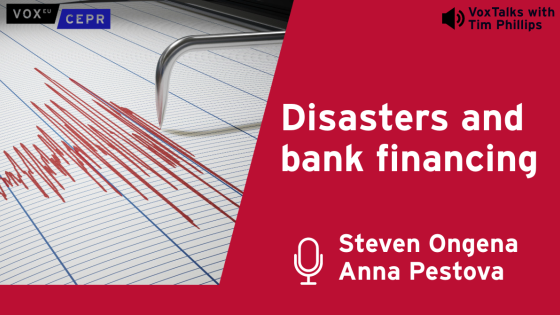A seismic shift, hidden in plain sight and in part driven by public policy, has taken place in the financial system: the use of collateral, notably in the form of government securities, has become ubiquitous. Financial transactions have increasingly been based on assessments of collateral quality rather than of borrowers’ cashflows – a shift from ‘relationship’ to ‘transactional’ finance (CGFS 2001).
This shift has broadened and deepened financial markets. The sheer scale of some financial activities, such as derivatives trading, would not have been feasible without it. Collateral has allowed market participants to hedge and gain exposure to a broader range of risks, improving overall financial intermediation efficiency. And to the extent that it has resulted in a better allocation of risks, it has had a positive effect on financial stability.
However, greater collateral use also raises financial stability risks of its own. Collateral does protect individual creditors – including derivatives’ counterparties – in the event of default. But it increases the incidence of defaults at the aggregate level. And by shifting the loss absorption function to markets, it raises liquidity risk, which can disrupt the system (Mehrling 2012). This could even undermine the ‘safe haven’ status of high-quality collateral such as government securities, albeit temporarily (Duffie 2020). In all these instances, a classic ‘fallacy of composition’ is at work: individually rational decisions can be stabilising in the small but destabilising in the large.
The seismic shift
Policy decisions have played a key role in triggering and perpetuating the seismic shift. Repo markets in the US expanded in the 1950s, as authorities sought to facilitate the transition from post-WWII financial repression to a market-based determination of government bond yields. From the 1980s, deregulation has broadened the investor base and the spectrum of financial products, calling for greater collateral-based risk management. And in the 1990s run-up to the common currency, policy boosted repo markets in Europe.
Major crises in the 21st century strengthened the shift further. With concerns about counterparty risk escalating, unsecured interbank markets froze during the Great Financial Crisis (GFC) and were then largely replaced by repos – a secured form of lending and borrowing. Similar dynamics were at play during the euro sovereign debt crisis in 2011-12. Incentives to use collateral – especially its prime form, government paper – firmed on the back of post-GFC regulatory reforms, such as credit risk mitigation standards (BCBS 2020), capital requirements for non-centrally cleared derivatives (BCBS and IOSCO 2020), and the migration of standardised OTC derivatives to central clearing (G20 2009).
As the seismic shift unfolded, the use of specific collateral types reflected their loss-absorbing capacity and practical considerations. This capacity is highest if the value of the collateral asset is fixed in nominal terms or even rises when the counterparty defaults and is insensitive to its liquidation upon default, i.e. it is transacted in a liquid market. While real estate does not possess these properties, it is widely used mainly because it is the only asset that many borrowers can pledge. The loss-absorbing capacity is much higher for sovereign paper, the collateral of choice in repo transactions: it is often free of credit and liquidity risk and typically rises in value during stress, i.e. it has safe haven properties. That said, unless of short maturity, it is subject to interest rate risk. While cash in the form of bank deposits, used heavily for FX swaps, carries little liquidity and interest rate risk, it does carry credit risk. In practice, only cash in the form of central bank reserves has a fixed nominal value. Thus, central bank reserves and sovereign paper-backed deposits (reverse repos) are the preferred ‘cash’ collateral for centrally cleared derivatives.
Collateral and financial instability
Lending against collateral, requiring margins for derivatives transactions, and engaging in other types of secured transactions are useful risk management strategies from the perspective of individual agents. It is typically easier to assess the quality of a pledged asset, and impose haircuts accordingly, than to evaluate a counterparty’s creditworthiness. And if the counterparty defaults, liquidating the collateral helps mitigate the loss given default (LGD). Moreover, to the extent that collateral improves the distribution of risk in the system, it has beneficial effects on financial stability. For example, agents can hedge a broader range of risks and the creditor taking collateral on a firm may be more systemic than the others.
But even if the use of collateral eliminates the LGD for individual creditors, its widespread use also raises financial stability risks of its own. The two reasons for this stem from credit and liquidity risks.
First, collateral use is likely to raise borrowers’ probability of default (CGFS 2001). For one, the whole point of taking collateral is to save on the ex-ante screening and ex-post monitoring costs. Thus, unless the borrowing significantly improves future cashflows, the use of collateral adds to leverage-related fragility. The lower the haircut or margin, the higher the increase in leverage.
The effect is stronger in financial booms, when more assets appear of high quality and margins become thinner. All else equal, a higher aggregate use of collateral means a higher incidence of defaults, which causes stress in the system.
Second, the use of collateral raises liquidity risk. This risk may materialise ex ante, if creditors hoard collateral to protect themselves in the face of a mounting likelihood of defaults. Concretely, clearing houses may ask for higher initial margin as volatility spikes, there could be variation margin calls on derivatives contracts, or there could be top-ups when the value of collateral declines. To meet the demand for more collateral, counterparties would need to obtain unencumbered eligible assets either through unsecured borrowing or by selling other assets, generating liquidity stress. Liquidity risk may also materialise ex post, if defaults prompt creditors to liquidate collateral that does not fit in their portfolio strategy. If the liquidity strains are widespread enough, the associated fire sales can depress asset prices substantially, further increasing credit risk.
Such liquidity-credit risk spirals have been quite common (for example, the LTCM crisis of 1998 or the commodity crisis in 2022, just to pick two very different asset classes).
Regardless of the specific channels, a fallacy of composition is at play. What appears reasonable from an individual agent’s perspective may not be desirable from a system-wide one. The collective impact of individual agents’ attempts to protect themselves against counterparty credit risk can raise risk for the system as a whole.
Importantly, and less appreciated, the widespread use of government paper as collateral may even undermine its safe haven status, albeit temporarily. This scenario does not feature a wave of private sector defaults, which could strengthen that status. Rather, it involves an exogenous shock that depresses the value of government paper, triggering a selling spree.
The specific trigger may vary. It could be an unexpected monetary policy tightening, as in the bond market crash of 1994, when highly leveraged positions were unwound en masse (Borio and McCauley 1996). It could be spikes in margins and procyclical risk management practices, as in March 2020, when hedge funds were forced to unwind relative value trades in Treasury bonds and futures (Schrimpf et al. 2020). Or it could be concerns about fiscal policy in the context of high inflation, as during the gilt market stress in October 2022. Yet another possible trigger is a deterioration in the sovereign’s creditworthiness.
The current environment heightens the risk that a collateral spiral weakens the safe haven status. For one, stubborn inflation increases the probability of a sudden monetary policy tightening or, if the central bank is perceived to be behind the curve, of a government bond sell-off. This is a departure from the financial cycle-induced downturns from the mid-1980s until the Covid crisis (Borio et al. 2018), which led to interest rate cuts that boosted the value of bonds (Clarida 2019). In addition, sovereign credit risk is likely to grow. Public debt-to-GDP ratios are historically high and set to climb further, not least owing to pressures on spending linked to the green transition, geopolitical tensions and ageing populations (BIS 2023).
Policy options
How can policy mitigate the destabilising side effects of broad-based collateral use while retaining its benefits? This is especially important for central banks, given their lender and market-maker of last resort function, which has been called upon all too often in recent years. Consider just a few options for crisis prevention.
One set of measures would seek to alleviate fire sale pressures once they arise. For instance, fulfilling some margin requirements with securities rather than cash would help avoid procyclical selling sprees that depress these securities’ valuation. Likewise, there could be merit in insurance schemes that pool collateral in systemic events to smooth its sale over time (e.g. Acharya and Öncü 2013, Sissoko 2022). And greater use of trading mechanisms that broaden the spectrum of participating investors (‘all-to-all’) would avoid clogging dealers’ balance sheets, thus improving markets’ shock-absorbing capacity.
More fundamentally, policy measures could lessen collateral-based leveraging in good times and the attendant deleveraging in bad ones. One approach would be to mandate higher margins and haircuts through the cycle.
Going one step further, one could reduce the need to increase margins or haircuts in bad times, for example by setting floors in good times.
Authorities need to recognise that the benefits of collateral are not a free lunch: they come with unintended consequences. The attendant financial stability risks need to be properly addressed.
Authors’ note: The views expressed are those of the authors, not necessarily those of the Bank for International Settlements.
References
Acharya, V and T Öncü (2013), “A proposal for the resolution of systemically important assets and liabilities: the case of the repo market”, International Journal of Central Banking, January.
Aramonte, S, A Schrimpf and H S Shin (2021), “Non-bank financial intermediaries and financial stability,” BIS Working Papers No. 972.
BCBS – Basel Committee for Banking Supervision (2020), Calculation of RWA for credit risk. Standardised approach: credit risk mitigation, 26 November.
BCBS and IOSCO – Basel Committee for Banking Supervision and International Organization of Securities Commissions (2020), Margin requirements for non-centrally cleared derivatives, April.
BIS – Bank for International Settlements (2023), Annual Economic Report, Basel.
Borio, C, M Drehmann and D Xia (2018), “The financial cycle and recession risk”, BIS Quarterly Review, December.
Borio, C and R McCauley (1996), “The economics of recent bond market volatility”, BIS Economic Papers No. 45, July.
Clarida, R (2019), “Monetary policy, price stability, and equilibrium bond yields: success and consequences”, speech at the High-Level Conference on Global Risk, Uncertainty, And Volatility, Zurich, Switzerland, 12 November.
Duffie, D (2020), “Still the world’s safe haven?”, Hutchins Center Working Paper No 62.
CGFS – Committee on the Global Financial System (2001), “Collateral in wholesale financial markets: recent trends, risk management and market dynamics”, CGFS Papers No. 17, March.
G20 (2009), “G20 leaders’ statement: the Pittsburgh summit”, September.
Mehrling, P (2012), “Three principles for market-based credit regulation”, The American Economic Review, Papers and Proceedings 102(3): 107–12.
Schrimpf, A, H S Shin and V Sushko (2020), “Leverage and margin spirals in fixed income markets during the Covid-19 crisis”, BIS Bulletin No. 2.
Singh, M (2010), “The sizable role of rehypothecation in the shadow banking system”, IMF Working Paper No. 10/172.
Sissoko, C (2022), “Financial dominance: why the ‘market maker of last resort’ is a bad idea and what to do about it”, SSRN.








